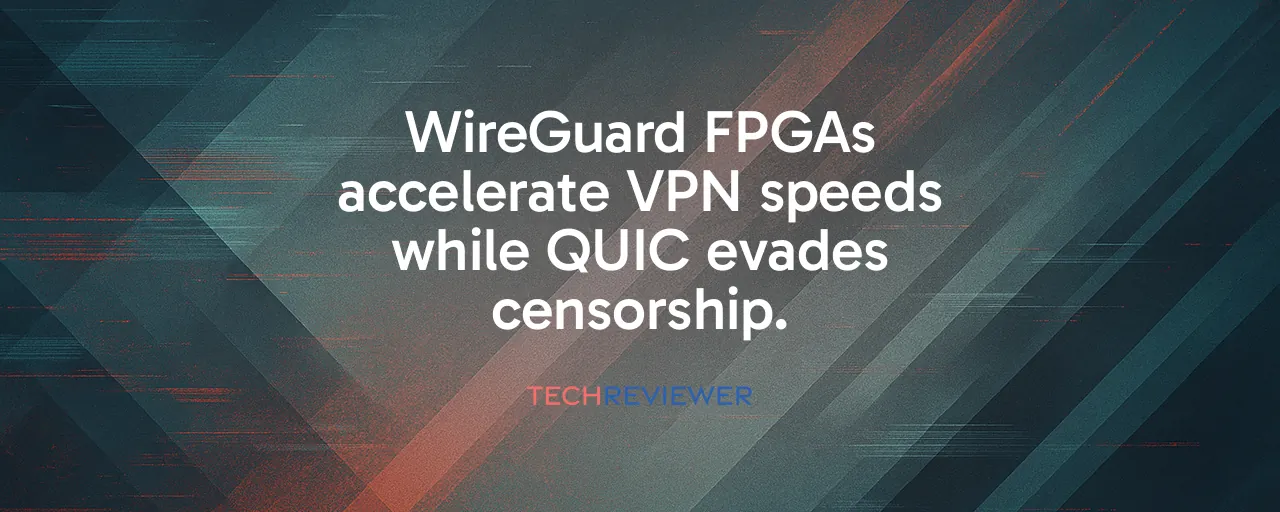A New Era for VPN Performance
Virtual private networks have long been the backbone of secure remote access, but they're getting a serious upgrade. A new open-source hardware project highlighted on Hacker News on October 12, 2025, by developer chili-chips-ba has drawn attention for implementing WireGuard, a lean and fast VPN protocol, on low-cost Artix7 FPGAs. This open-source effort delivers blazing-fast encryption without the hefty price tag of enterprise-grade hardware. Meanwhile, a quieter conversation is brewing about QUIC, a protocol originally built for speedy web browsing, now eyeing a role as a VPN game-changer. Both approaches promise to make VPNs faster and more secure, but they're taking wildly different paths to get there.
WireGuard's appeal lies in its simplicity. With just 4,000 lines of code, it's a breeze to audit and implement compared to clunky giants like OpenVPN or IPsec, which can balloon to tens of thousands of lines. The chili-chips-ba team leveraged this lean design to create a standalone VPN appliance that processes packets at wire speed, meaning no noticeable slowdown even on high-bandwidth connections. On the flip side, QUIC brings a bag of modern tricks, like seamless network switching and traffic that blends in with everyday web browsing. These developments aren't just academic exercises; they're reshaping how businesses and individuals stay secure online.
WireGuard's Hardware Edge
The chili-chips-ba project is a love letter to open-source hardware. By targeting affordable Artix7 FPGAs, it makes high-speed VPNs accessible to more than just deep-pocketed corporations. Unlike software-based VPNs that hog CPU resources, this setup offloads encryption to dedicated hardware, using ChaCha20-Poly1305 for speedy, secure data processing. Tests show WireGuard can hit nearly four times the throughput of OpenVPN in controlled settings, and hardware acceleration pushes that even further, slashing latency for apps like video calls or remote desktops.
A real-world example comes from the Blackwire project, which hit an impressive 100Gbps using pricier AMD Xilinx AlveoU50 cards. Chili-chips-ba takes a more democratic approach, using open-source toolchains like OpenXC7 to keep costs low and transparency high. Corporate IT teams love this because it means no hidden backdoors in proprietary firmware. But there's a catch: Artix7 chips aren't speed demons, capping out at around 100MHz for core logic. Scaling to thousands of simultaneous connections or dynamic setups is still a hurdle, and the project remains more proof-of-concept than ready-for-primetime enterprise solution.
QUIC's Modern Twist on VPNs
While WireGuard races ahead with hardware, QUIC takes a different tack. Born from Google's work to speed up the web, QUIC powers modern web services and now shows promise as a VPN tunneling protocol. Its strength? Flexibility. QUIC uses TLS 1.3 for top-tier security, supports dynamic DNS for endpoints, and plays nice with load balancers. Plus, its traffic looks like regular web activity, making it harder for censors to spot. In September 2025, Mullvad VPN rolled out QUIC obfuscation for WireGuard, tunneling its traffic through web servers to dodge censorship while keeping performance zippy.
QUIC's not perfect, though. Running in userspace, it's more complex than WireGuard's kernel-level efficiency, and performance depends heavily on the operating system's optimizations. Still, its ability to handle network switches, like jumping from Wi-Fi to cellular without dropping a connection, makes it a darling for mobile-heavy enterprise setups. China's Great Firewall targeting QUIC traffic in April 2024 showed that censors are catching on, but Mullvad's approach proves the protocol's resilience when layered smartly. For companies needing FIPS-compliant solutions or custom authentication, QUIC's versatility is hard to beat.
Lessons From the Front Lines
Comparing Mullvad's QUIC experiment and Blackwire's high-end FPGA work offers a glimpse into the VPN world's future. Mullvad's move shows how blending protocols can outsmart censorship without sacrificing speed. By wrapping WireGuard in QUIC's web-like disguise, they've made VPNs tougher to block in restrictive regions. Blackwire, meanwhile, proved that FPGAs can push VPNs to absurd speeds, but its reliance on expensive hardware and shaky funding, leading to an abrupt open-source release, highlights the risks of betting big on niche tech.
The bigger lesson? Accessibility matters. Chili-chips-ba's focus on affordable FPGAs opens the door for smaller players, from startups to universities, to build secure, auditable VPNs. QUIC's software-based approach, while less blisteringly fast, offers a plug-and-play flexibility that doesn't require a hardware engineering degree. Both paths push the industry toward a future where VPNs are faster, harder to censor, and more transparent, but they also remind us that no single solution rules them all. Enterprises will need to weigh cost, scalability, and use case before picking a side.
What's Next for Secure Connections
The VPN landscape is evolving fast. With the global VPN market expected to hit $80 billion by 2028, driven by remote work and cloud adoption, the demand for speed and security isn't slowing down. Hardware acceleration, like chili-chips-ba's FPGA work, will likely spread to data centers and edge devices, cutting CPU strain and boosting throughput. QUIC's rise, fueled by its widespread use in modern web services, could make it a go-to for mobile and censorship-prone environments, especially as post-quantum cryptography starts creeping in.
Both approaches have their fans. Open-source developers and academic researchers are rallying behind affordable FPGAs for their transparency and teaching potential. Corporate IT teams, meanwhile, are eyeing QUIC for its compliance-friendly TLS 1.3 and dynamic features. The real winner? Users, who get faster, safer connections whether they're bypassing firewalls in censored regions or streaming high-def video from a corporate VPN. As these technologies mature, expect a hybrid future where WireGuard's raw speed and QUIC's clever disguise work hand in hand.
